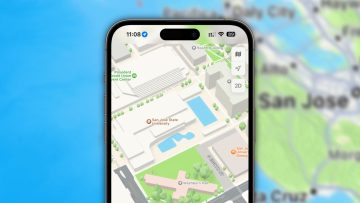The Pixel 2 and Pixel 2 XL are a strange duo. They’re flagship devices, supposed to be similar except for size. But unlike their predecessors, they have radically different designs. The Pixel 2 is stuck in 2016, and it’s not pretty. The Pixel 2 XL, meanwhile, sports the all-screen design that’s characteristic for almost every 2017 smartphone flagship out there.
But both phones lack a dual-rear camera on the back, which is the one other key feature of 2017 high-end smartphones.
Apple did not invent dual cameras, but the iPhone 7 Plus made the dual camera a flagship staple, and others were quick to follow with similar designs. LG’s G6 and V30 sport dual cameras (to be fair to LG, the G5 that launched before the iPhone 7 also had a dual camera). Samsung wanted one for the Galaxy S8 line but only squeezed a dual camera shooter in the Galaxy Note 8. The Galaxy S9 is already rumored to have the same photo technology.
The Huawei P10, the Essential Phone, the Nokia 8, and even OnePlus’s iPhone 7 Clone have dual rear cameras.
So why not Google? Google explained during the show that the Pixel 2 lens is so good it can do bokeh effects and depth of fields tricks without a secondary shooter.
Google believes it’s able to match the performance of all those phones, including portrait pictures with blurred backgrounds, without needing extra hardware in the camera department.
“[There’s] nothing we’re missing for that feature set with that camera,” Google’s Mario Queiroz told a group of journalists at a briefing earlier this week, according to CNET.
Google cameras come with a technology called dual pixel, which splits every pixel into two. Left and right sensors capture left and right photos, which is how Google achieves its bokeh effects on both the rear and front cameras.
In addition to that, there’s an algorithm that Google created to identify a face and then pair it with hair, body, and everything else that’s part of the subject. Once that’s done, the camera focuses on the person, and the background is blurred.
That’s definitely impressive, and Google says it trained the system using a million of hand-picked photos. But the camera review Google is most proud of says that while the Pixel 2 scores better overall than the iPhone 8 Plus and the Galaxy Note 8, it offers an inferior bokeh and zooming experiences. It turns out, two cameras are better than one.
Google also told journalists that by not using a dual camera setup it had greater design freedom. That allowed the company to pack a bigger battery inside the Pixel 2 than the phone might otherwise have.
That’s great and all. But as soon as the iPhone X comes out, a phone that’s about as big as the Pixel 2, we’ll see a phone that sports both a dual camera setup on the back and a battery almost as big as the Pixel 2.








